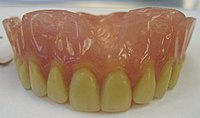
A Computed Tomographic and Pathological Study of Equine Cheek Teeth Infundibulae Extracted From Asymptomatic Horses. Part 2: MicroCT, Gross, and Histological Findings
Sign Up to like & getrecommendations! Published in 2019 at "Frontiers in Veterinary Science"
DOI: 10.3389/fvets.2019.00125
Abstract: Background: Equine maxillary cheek teeth infundibulae are frequently affected by developmental and acquired disorders, but the imaging, gross, and histological features of normal and abnormal infundibulae remain incompletely understood. Objective: To perform MicroCT, gross examination,… read more here.
Keywords: microct gross; gross histological; cheek teeth; teeth infundibulae ... See more keywords

A Computerized Simulation of the Occlusal Surface in Equine Cheek Teeth: A Simplified Model
Sign Up to like & getrecommendations! Published in 2021 at "Frontiers in Veterinary Science"
DOI: 10.3389/fvets.2021.789133
Abstract: Equine mastication, as well as dental wear patterns, is highly important for the development of treatments in equine dentistry. During the last decades, the stress and strain distributions of equine teeth have been successfully simulated… read more here.
Keywords: simulation; cheek teeth; wear; equine ... See more keywords

Studies on Age-Related Changes in Equine Cheek Teeth Angulation and Dental Drift
Sign Up to like & getrecommendations! Published in 2022 at "Frontiers in Veterinary Science"
DOI: 10.3389/fvets.2021.804061
Abstract: Background Cheek teeth (second through fourth premolars and first through third molars) diastema is a common and painful equine disorder caused by the absence of effective tight interdental contact between these teeth. Limited objective information… read more here.
Keywords: angulation; cheek teeth; age; triadan ... See more keywords

A histological description of alpaca (Vicugna pacos) cheek teeth: Findings and anatomical variations in macroscopically normal molars
Sign Up to like & getrecommendations! Published in 2022 at "Frontiers in Veterinary Science"
DOI: 10.3389/fvets.2022.972973
Abstract: Scientific literature on veterinary dentistry in alpacas has historically focused on the description of tooth root abscesses. However, recent studies have shown a variety of other, sometimes preceding dental conditions to be widespread in this… read more here.
Keywords: histological description; cheek teeth; alpaca vicugna; description alpaca ... See more keywords

The Equine Dental Pulp: Histomorphometric Analysis of the Equine Dental Pulp in Incisors and Cheek Teeth
Sign Up to like & getrecommendations! Published in 2022 at "Veterinary Sciences"
DOI: 10.3390/vetsci9060261
Abstract: To maintain a healthy and functional status, equine hypsodont teeth have to produce lifelong large amounts of subocclusal dentin to prevent occlusal pulp exposure, which is caused by occlusal wear. To examine the cyto- and… read more here.
Keywords: equine dental; dental pulp; cheek teeth; pulp histomorphometric ... See more keywords